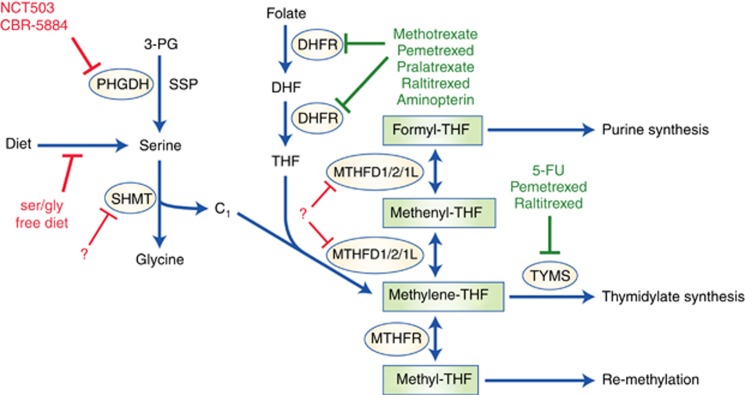Figure 1.
An overview of one-carbon metabolism and the established/future therapeutics that target this pathway. One-carbon metabolic pathways with established chemotherapeutics highlighted in green and possible targets for future interventions highlighted in red. Solid red lines indicate interventions that are currently in development. Dashed lines indicate possible targets that may be subject to further investigation. Enzymes that regulate these pathways are circled. Serine can be obtained from the diet, or synthesised de novo from the glycolytic intermediate, 3-PG by the SSP, of which PHGDH is a key enzyme. Dietary folate is converted by DHFR first to DHF and then to THF, a one-carbon unit acceptor. Serine is catabolised to glycine by SHMT1/2, which yields a one-carbon unit (C1) that is accepted by THF to form methylene-THF. Methylene-THF can then be converted to formyl-THF via the intermediate methenyl-THF by the action of MTHFD1/2/1L. Formyl-THF donates its one-carbon unit to purine synthesis. Methylene-THF can either donate its one-carbon unit to thymidylate synthesis or be converted by MTHFR to methyl-THF, which supplies one-carbon units for methionine recycling.

